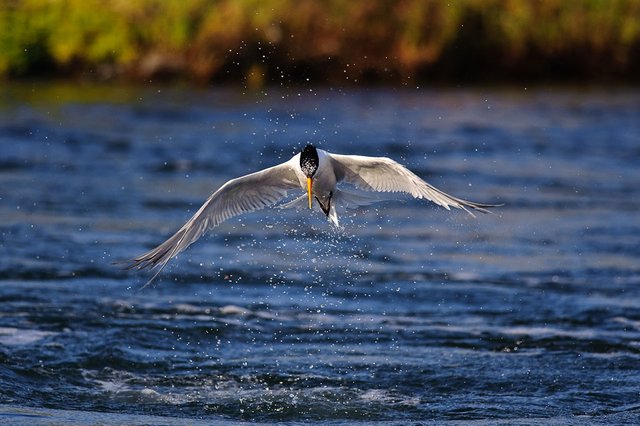What is ISO?
In very basic terms, ISO is the level of sensitivity of your camera to available light. The lower the ISO number, the less sensitive it is to the light, while a higher ISO number increases the sensitivity of your camera. The component within your camera that can change sensitivity is called “image sensor” or simply “sensor”. It is the most important (and most expensive) part of a camera and it is responsible for gathering light and transforming it into an image. With increased sensitivity, your camera sensor can capture images in low-light environments without having to use a flash. But higher sensitivity comes at an expense – it adds grain or “noise” to the pictures.
Take a look at the following picture:
The difference is clear – the image on the right hand side at ISO 6400 has a lot more noise in it, than the one on the left at ISO 100.
Every camera has something called “Base ISO”, which is typically the lowest ISO number of the sensor that can produce the highest image quality, without adding noise to the picture. Some older Nikon DSLRs and a number of other modern cameras such as the Fuji X-T2 have a base ISO of 200, whereas most modern Nikon and Canon digital cameras have a base ISO of 100. So, optimally, you should always try to stick to the base ISO to get the highest image quality. However, it is not always possible to do so, especially when working in low-light conditions.
Typically, ISO numbers start from 100-200 (Base ISO) and increment in value in geometric progression (power of two). So, the ISO sequence is: 100, 200, 400, 800, 1600, 3200, 6400 and etc. The important thing to understand, is that each step between the numbers effectively doubles the sensitivity of the sensor. So, ISO 200 is twice more sensitive than ISO 100, while ISO 400 is twice more sensitive than ISO 200. This makes ISO 400 four times more sensitive to light than ISO 100, and ISO 1600 sixteen times more sensitive to light than ISO 100, so on and so forth. What does it mean when a sensor is sixteen times more sensitive to light? It means that it needs sixteen times less time to capture an image!
ISO Speed Example:
ISO 100 – 1 second
ISO 200 – 1/2 of a second
ISO 400 – 1/4 of a second
ISO 800 – 1/8 of a second
ISO 1600 – 1/15 of a second
ISO 3200 – 1/30 of a second
In the above ISO Speed Example, if your camera sensor needed exactly 1 second to capture a scene at ISO 100, simply by switching to ISO 3200, you can capture the same scene at 1/30th of a second! That can mean a world of difference in photography, since it can help to avoid camera shake or motion blur.
Take a look at this picture:
NIKON D700 @ 420mm, ISO 450, 1/2000, f/5.6
I captured these Black Skimmers at 1/2000th of a second at ISO 450. So my camera sensor needed 1/2000th of a second to fully freeze the birds while they were in flight. Now what would have happened if I had ISO 100 on my camera instead? My sensor would have needed 8 times more time to capture the same scene, which is 1/250th of a second. At that speed, I would have introduced motion blur into my picture, because the birds were moving faster than that. In short, I would have ruined the picture.
When to Increase ISO
You should increase the ISO when there is not enough light for the camera to be able to quickly capture an image. Anytime I shoot indoors without a flash, I set my ISO to a higher number to be able to capture the moment without introducing blur to the image. Another case where you might want to increase ISO is when you need to get ultra-fast shots, like the bird picture I posted above. Before increasing the ISO though, you should first decide if it is OK for you to introduce some noise to the image. Remember, the bigger the ISO number, the more noise you will see in your images.
On many of the newer cameras, there is a setting for “Auto ISO“, which works great in low-light environments. The beauty of this setting, is that you can set maximum ISO to a certain limit, so when ISO is automatically increased based on the amount of ambient light, it does not cross the set limit. So, if I want to limit the amount of grain in my pictures, I typically set maximum ISO to something like 800 or 1600 on most entry-level cameras and I can push that number even higher on higher-end full-frame cameras.
Congratulations @hemantkumardhuw! You have completed some achievement on Steemit and have been rewarded with new badge(s) :
Click on any badge to view your own Board of Honor on SteemitBoard.
For more information about SteemitBoard, click here
If you no longer want to receive notifications, reply to this comment with the word
STOPDownvoting a post can decrease pending rewards and make it less visible. Common reasons:
Submit